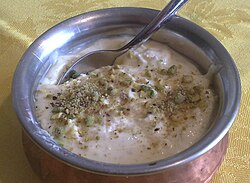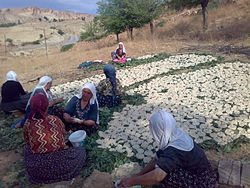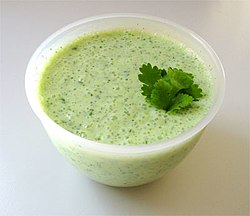Dishes

- Churri – a spicy Indian side dish
- Çılbır – Turkish egg dish
- Jameed – Jordanian yogurt strained cheese
- Mansaf - Levantine dish of meat cooked in yogurt
- Kashk – Sour dairy product, popular in Central Asia and Northern Middle East
- Kibbeh – Arab and Levantine dish of ground meat and bulgur Labanie
- Mishti Doi – Dessert of Bengal
- Shrikhand – Indian food made from strained yogurt
- Tavë kosi – Albanian baked lamb and rice dish
- Zhoixo – Wild ginseng, made with yogurt











